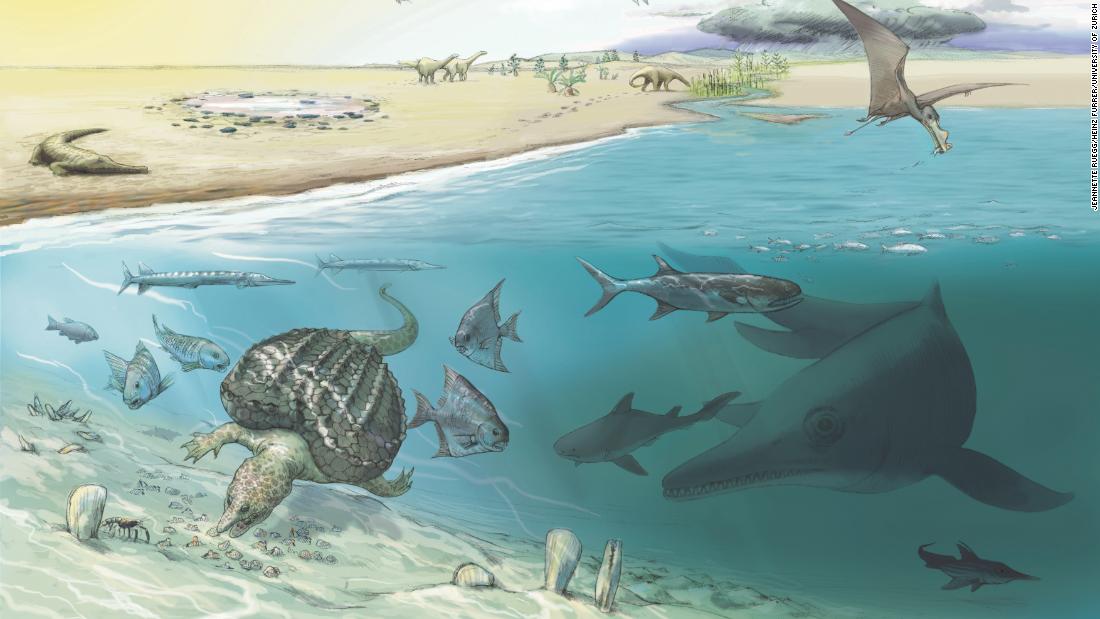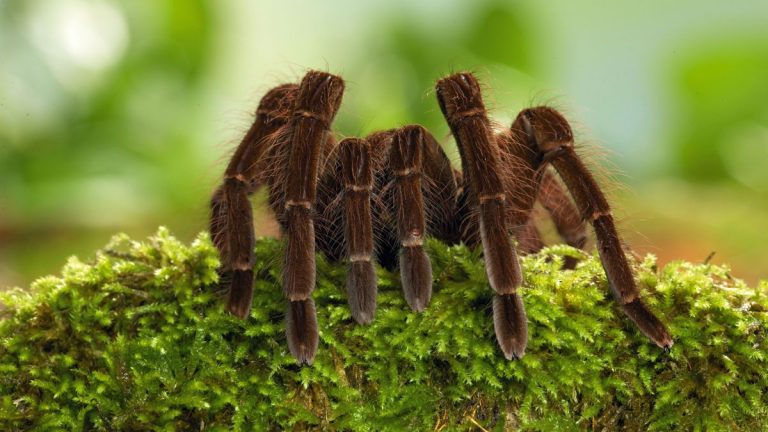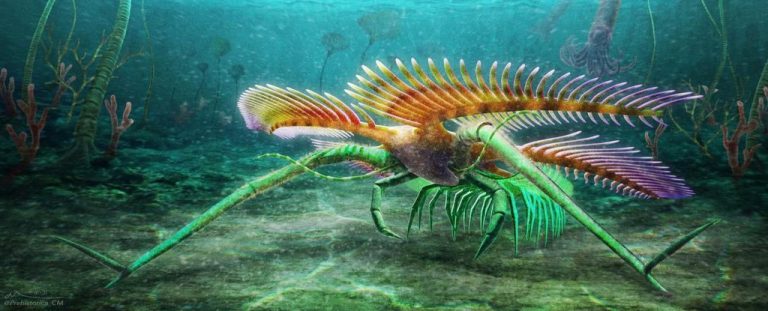‘Fish Lizard’ Fossils Found In The Swiss Alps Belonged To Some Of The Largest Creatures That Ever Lived
The fossils belong to three ichthyosaurs, and they may have been among the largest animals to ever live on Earth, according to a new study. Ancient creatures could reach 80 tons and 65 feet (20 meters) in length, rivaling modern sperm whales.
These “fish lizards” first appeared in the ocean about 250 million years ago, looking a bit like dolphins with elongated bodies and small heads. They appeared after the mass extinction of the Permian which wiped out more than 95% of marine species. But 200 million years ago, the giant ichthyosaurs had died out, and only the smaller, more dolphin-like ones lived until 90 million years ago.
So how did the remains of massive sea creatures, including one longer than a bowling alley, end up at an altitude of 9,186 feet (2,800 meters)?
About 200 million years ago, these rock layers formed the bottom of a vast lagoon.
“We believe that large ichthyosaurs followed schools of fish into the lagoon. The fossils may also be from wandering animals that died there,” said study co-author Heinz Furrer, a retired curator at the Paleontological Institute and Museum of the University of Zurich, in a press release.
But the folding of the Alps, which began 95 million years ago when the African tectonic plate began to push against the European tectonic plate, created heaps of rock layers around 30 to 40 million years ago. . The fossils were “tectonically deformed”, crushed by the movements of the tectonic plates which pushed them towards a rock formation on the top of a mountain.
“You have to be some kind of mountain goat to get to the affected beds,” study lead author P. Martin Sander, a professor of vertebrate paleontology at the University of Bonn in Germany, said in a statement. . “They have the vexing property of not occurring below about 8,000 feet (2,438.4 meters), well above the tree line.”
Although these creatures once ruled the seas, fossils are rare, which has created a great mystery for paleontologists. But the remains of these ichthyosaurs have shed new light on these enigmatic and extinct creatures.
A huge tooth
The fossils belonged to three different ichthyosaurs. One was about 65 feet (20 meters) long while the other was 49 feet (15 meters) long. But the most exciting discovery associated with these fossils is the largest ichthyosaur tooth ever found.
“It’s huge by ichthyosaur standards: its root was 60 millimeters in diameter – the largest specimen still in a complete skull to date measured 20 millimeters and was from an ichthyosaur that was nearly 18 meters (59 feet) tall. long,” Sander said.
Scientists know that small ichthyosaurs had teeth, but most giants were toothless, and were thought to feed on cephalopods, like squid, by suction.
Giant ichthyosaurs with teeth were likely similar to modern-day sperm whales and killer whales, using their teeth to capture prey like giant squid.
But the tooth presents a challenge because it was broken at the crown. Although researchers know it was an ichthyosaur tooth due to unique features, such as the folding of dentin in the root of the tooth, they cannot be sure that the size of the tooth reflects the size of the animal.
“It’s hard to tell whether the tooth is from a large ichthyosaur with giant teeth or a giant ichthyosaur with medium-sized teeth,” Sander said.
That’s because, researchers say, being giant and being a predator (with teeth) don’t line up – which is why the blue whale, which weighs 150 tons and can grow up to 98 feet (30 meters) long , does not have all the teeth. Instead, it filters out tiny creatures from the water.
Meanwhile, sperm whales, which weigh 50 tons and reach 65 feet (20 meters) in length, are hunters.
“So marine predators probably can’t get much bigger than a sperm whale,” Sander said.
Giants in the mountains
The fossils were first discovered during geological mapping of the Alps between 1976 and 1990. Furrer was part of the original team that recovered the fossils from the rocks, known as the Kössen Formation, and remembers having held the fossils in his hand when he was a doctoral student at the University of Zürich.
Over time, the fossils were largely forgotten.
“Recently, however, other giant ichthyosaur remains have appeared,” Furrer said. “It therefore seemed interesting to us to analyze the Swiss finds in more detail again.”
Ichthyosaur fossils have been found around the world, but the remains of giant species have been concentrated in North America. The discovery of these specimens in modern Switzerland widens their range.
Previous evidence has suggested that some of them could reach the size of blue whales, the world’s largest animal.
“In Nevada we see the beginnings of true giants, and in the Alps the end,” Sander said. “Only medium-to-large sized dolphins – and killer whale-like forms survived until the Jurassic (period)”, between 145 and 201 million years ago.
Sander wonders if there are more “giant sea creatures hiding under glaciers.” But these fossils help fill a knowledge gap about giant sea lizards.
“It represents a major embarrassment to paleontology that we know so little about these giant ichthyosaurs despite the extraordinary size of their fossils,” Sander said. “We hope to meet this challenge and find new and better fossils soon.”
#Fish #Lizard #Fossils #Swiss #Alps #Belonged #Largest #Creatures #Lived







